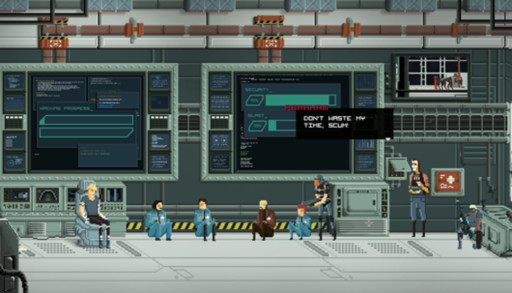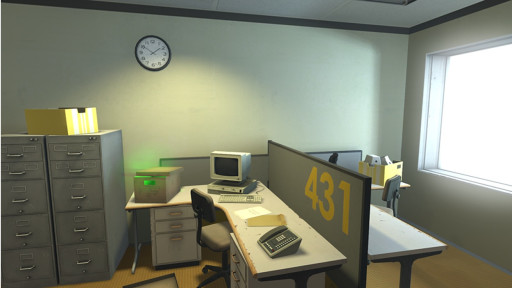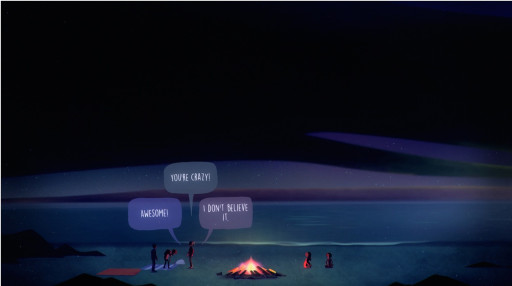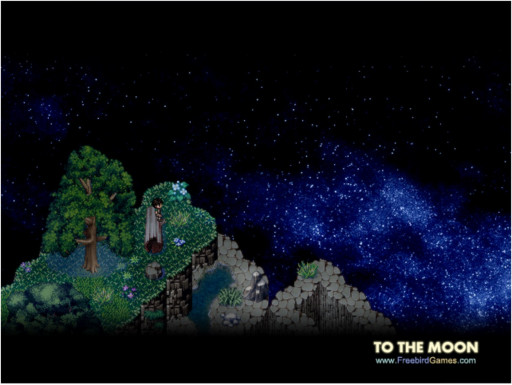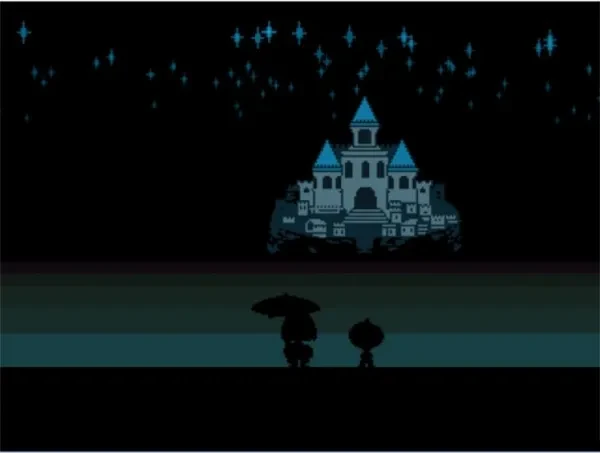
Looking for more Undertale? See how many games you recognize in this list of 17 games similar to Undertale, from 10 to 1.
In 2015, PC gamers were treated to a fantastic underground adventure in Undertale, the critically-acclaimed, story-driven RPG by Toby Fox. With its charming cast of characters and unusual game mechanics, the game was a surprising hit. Since its release, fans have wandered the internet, desperate for more Undertale -- but thanks (or no thanks) to the game’s uniqueness, that particular itch can be hard to scratch.
To make it easier for you to get your Undertale fix, we’ve put together a list of games that share a variety of things with Undertale -- from game mechanics, to story hooks, and themes to sheer aesthetics. Here’s our list, starting with number 17.
17) LISA
Do you like post-apocalyptic hellscapes? Think Mad Max isn’t realistic or dark enough? If so, then LISA: The Painful might be right for you. LISA, a side-scrolling RPG, takes place in the post-apocalyptic land of Olathe, where some terrible event has killed off every female human being on the planet, except one. Enter Brad Armstrong, a washed-up karate instructor with a drug addiction. It is the player’s job as Brad to keep Buddy, the world’s lone infant female, safe. In a world as strange and dangerous as Olathe, this is easier said than done.
LISA takes standard video game tropes of good, evil, and sacrifice and turns them on their heads. Olathe is a brutal world, often comically so. It is a place where violence and debauchery rule, in which playing “the good guy” is likely to get you killed, and will undoubtedly cost you anything from all the items in your inventory to the loss of several limbs.
Where most games treat such sacrifices as temporary, and as largely unimportant to gameplay, sacrifices made in LISA define gameplay for the rest of the game. This is similar to Undertale’s treatment of EXP and LV. Making good choices in Undertale (ie. not killing an NPC) results in not gaining EXP, and thus not increasing your LV and HP -- a sacrifice which results in more difficult encounters throughout the game. Likewise, losing a limb in LISA causes stat reductions, which greatly hinder Brad’s abilities in combat.
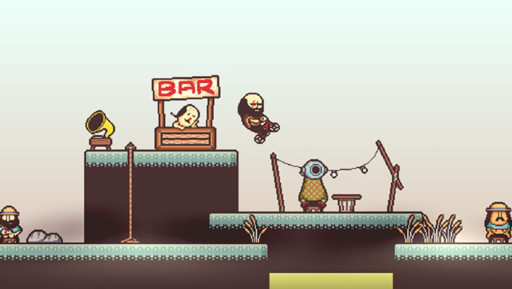
Brad shows off his biking skills.
On the lighter side of things, LISA’s NPCs tend to be extremely quirky, strange, and humorous. It is no coincidence that LISA shares this, and its art style, with Undertale. Both games are heavily inspired by SNES classic Earthbound. LISA’s retro sounds and graphics are quite charming, even as they, let’s say, depict murderous men lusting for sex.
Don’t go into LISA expecting the same jaunty fun as an Undertale pacifist run. Undertale can certainly get dark at times, but that is nothing compared to the twisted journey LISA will take the player on.
16) Gods Will Be Watching
Gods Will Be Watching is a point-and-click strategy/adventure game. As Sgt. Burden, you must infiltrate a rebel group who call themselves Xenolifers, who are aiming to take down the Federation that rules the galaxy. Gods Will Be Watching is a game about time and resource management. The first mission puts the player in control of Abraham, another Xenolifer, who must keep hostages alive, while keeping a strike team at bay, while ensuring that a hacking attempt goes smoothly, while keeping the hostages from attacking, while maintaining the sanity of another rebel... And that’s only the first chapter.
You can determine exactly how tense a scene is empirically if you count the number of hostages present.
The player has quite a bit to pay attention to at once, but, fortunately, all of the decisions in Gods Will Be Watching are made in a turn-based fashion, allowing the player to carefully choose who and what they will manage, how they will manage these variables, and when they will manage them. All of this comes together to form some very elaborate puzzles that can often lead to some hard decisions.
If you enjoyed choosing to kill only certain NPCs in Undertale (you monster) and seeing what the consequences of your actions are, then you’ll enjoy what Gods Will Be Watching has to offer -- if you can get past the brutal difficulty of its scenarios.
15) The Stanley Parable
In Galactic Cafe’s first-person exploration game The Stanley Parable, the player controls Stanley, an office employee. As Stanley, the player can choose to wander around the office building and do as they please, or they can choose to follow the instruction of the game’s narrator (played by British actor Kevan Brighting). Depending on simple choices made, such as whether to go left or right when a hallway forks, the player is treated to various reactions and musings by the narrator, and will receive one of the game’s numerous endings.
A typical office cubicle in a not-so-typical office building.
The Stanley Parable is primarily a game about choice and freedom. Like Undertale, The Stanley Parable pokes fun at modern game design by making many simple decisions seem dramatic and vastly more important than they ultimately are, while introducing other even more minor decisions that can, ultimately, be game-changing.
The Stanley Parable is a fun ride with impressive replay value. While most Undertale players may only care about the game’s two most important endings, players of The Stanley Parable often find themselves making every alternate decision possible just to see what will happen.
Kevan Brighting’s narration of the player’s exploits is often charming, humorous, and witty, keeping the experience fresh and bringing the player back for more after each ending. Ultimately, it is The Stanley Parable’s surreal self-awareness which most reminds me of Undertale -- a game in which the acts of saving or quitting the game can be seen as actual mechanics and pieces of the story.
14) Beholder
In Beholder, you play a state-installed apartment manager in a grim dystopian-totalitarian world. Your job is to spy on your tenants: bug their apartments, search their belongings, do anything you can to expose their wrongdoings to The Ministry. However, the player will quickly find that many of The Ministry’s mandates are both trivial and controlling.
Laws that prohibit the possession of apples or the acts of singing or crying just add more pepper to the game, making Beholder’s choices all the more difficult to make. Do you rat out a tenant for a small offense, but then turn a blind eye to a family member committing the same crime…?
Is that little girl holding an apple, a bomb, or just a little toy ball? Are you willing to ruin her life to find out?
Beholder excels at making the player feel that they are doing terrible things. It is a psychological experiment that punishes players no matter what decisions they make. Choose not to rat out your tenants and the government will replace you -- but can you live with yourself after placing ordinary citizens in jail simply for complaining about a new law?
Beholder and Undertale both tackle morality in a way that makes doing the absolute right thing seem impossible. Only, Beholder offers considerably fewer opportunities to do true good and have things work out for the best all around. It is a compelling look at what can happen when a totalitarian government is put in charge, and has been compared to George Orwell’s classic novel 1984. But in Beholder, you are Big Brother.
13) Oxenfree
Oxenfree is a point-and-click mystery/horror game that explores the supernatural through the eyes of a teenager. Many forms of media have done this, from TV cult classics like Buffy the Vampire Slayer, to blockbuster horror flicks like I Know What You Did Last Summer. Oxenfree is one of the few video games that takes this trope of teens and horror and presents it in a powerfully immersive and interactive package, all to great effect.
What you say has great impact on the characters in Oxenfree.
Oxenfree is not a game about jump scares and zombies. It isn’t about wandering a haunted house and being afraid of the atmosphere, either. The tried and true gameplay of Resident Evil or Silent Hill games is not something you will find in Oxenfree. Instead, Oxenfree’s main way of allowing the player to interact is through conversation.
As blue-haired, female, high school senior Alex, the player leads a group of awkward teenagers around a deserted military island. In this summer-party-gone-wrong, Alex and crew have discovered a series of mysterious radio signals. These signals lead to the opening of a ghostly rift through which events of the past will filter out into the present.
Alex must do everything she can to influence her fellow teens towards the correct choices in order to survive -- all while balancing her relationships with her step-brother, close friend, and others whom she may not yet know how to feel about. This focus on conversation and relationships is a compelling game mechanic. If you’re the sort of Undertale player who enjoyed befriending (and dating) monsters of all kinds, in every way you could, you’ll enjoy the much deeper character interactions Oxenfree’s incredible story has to offer.
12) To the Moon
Do you have regrets? Do you sometimes wonder if things could have been better had you just made the right choices? In To the Moon, altering the past to fix the things you regret is possible, if only within your own memory.
Doctors Eva Rosalene and Neil Watts are able to use an advanced procedure to enter into a person’s mind to view their memories, and even alter them. However, the procedure inevitably kills its patient, and so it is only ethically sound for it to be used on patients who are already on their deathbeds.
In To the Moon, you control Eva and Neil as they work backwards through the memories of Johnny, an elderly man who is on the verge of death. Eva and Neil have been hired to bring about -- within Johnny’s own mind -- Johnny’s last wish. And his wish is to go to the moon.
Mankind has long desired to reach out and touch the stars, but perhaps Johnny’s desire to reach the moon is a much more personal one.
The game is touching and profound, and the storytelling is spot-on. The graphics are reminiscent of SNES RPG classics like Chrono Trigger, which look great if, like me, you have a nostalgic yearn for something both retro and beautiful. Undertale explores the concept of going back and fixing things a bit, but To the Moon makes this a primary feature of the game, posing some interesting philosophical questions along the way.
If you’re looking for a deep and moving tale, look no further than To the Moon.
11) Mad Father
In Japanese horror game Mad Father by developer Sen, the player takes control of the protagonist Aya, a young girl who is the daughter of a mad scientist. One night, Aya is awakened by a loud scream, and rushes out to learn what has become of her father, in a mansion suddenly filled with corpses and ghosts.
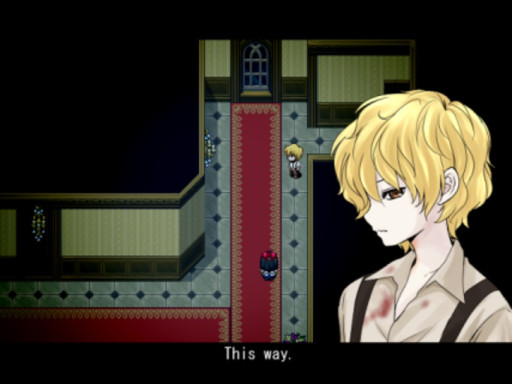
Who is this mysterious child, and what is he doing in Aya’s father’s mansion?
Gameplay in Mad Father is similar to any of the overworld sequences in Undertale. The player wanders from room to room with a top-down view of the mansion, interacting with objects as they go to solve puzzles and learn more of the game’s backstory. Many of the supernatural beings in the mansion serve as enemies that try to attack or frighten Aya, but many are harmless, or may simply need a little help.
In Undertale, you play a child who wanders around helping (or killing) monsters. The same can very well be said of Mad Father, playing off of similar themes of innocence, youth, and struggling to deal with beings that are supposed to be your enemies. Mad Father features a number of different endings based on Aya’s actions, some of which have been added in the Steam re-release. See if you can get them all!
10) Angels of Death
Angels of Death is a story-driven, top-down, exploration action/horror game from Japan, much like Mad Father. In Angels of Death, the player takes on the role of Ray, a young girl who had been receiving counseling at a hospital following the death of her parents. Ray awakens to find herself in an abandoned skyscraper, trapped along with a serial killer.
Ray is depressed, her parents are dead, and she doesn’t know where she is or what’s going on. For this reason, she makes the only logical decision -- she makes a deal with her potential killer, Zack, who only wishes to escape: If suicidal Ray helps Zack escape the skyscraper, he’ll do her a favor by killing her. Will they be able to maintain this deal, or will new secrets the two uncover along the way change the terms entirely?
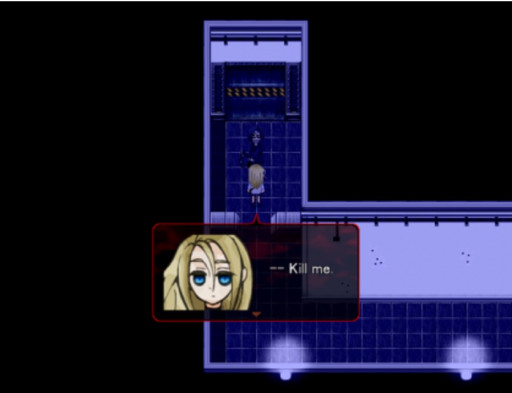
Trust between Zack and Ray hinges on their deal.
The game mixes together exploration with puzzles, action sequences, and even a bit of shooter gameplay, a blend that Undertale fans know well. If you played Mad Father and are looking for more Japanese mystery/horror, Angels of Death has you covered.
9) Alicemare
Another Japanese indie gem published by Playism, Alicemare is about a boy who has lost both of his parents, and his memory. Allen finds himself in a home for children who have lost their way, a place that shortly gives way to an alternate dimension that the children are trapped in and must escape.
As Allen, the player must wander between each child’s own section of this strange dimension, solving puzzles so that they all can escape, all the while learning more through vignetted hand-drawn cut-scenes that give insight into each child’s life. Alicemare draws from the dark side of classic fairy tales, and, while it may be classified as horror, the game will rarely be outright frightening -- just a bit more on the unsettling side.
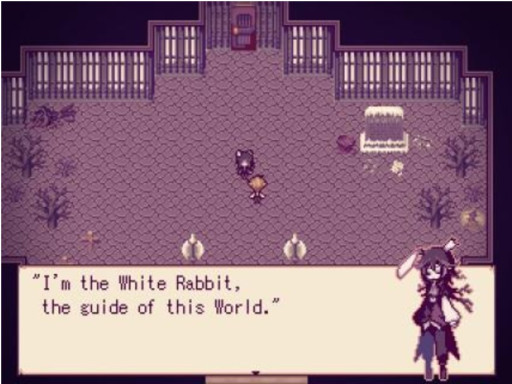
Allusions to classics like Lewis Carrol’s Alice in Wonderland add to Alicemare’s surreal qualities.
If you enjoyed the mischievous and often childish nature of some of Undertale’s characters, you’ll love the story Alicemare has to tell.
8) 60 Seconds!
In 60 Seconds! the player takes on the role of Ted, a family man living in the US during the 1950s. Ted’s life is torn apart when, one day, nuclear war breaks out, and Ted ends up with a mere 60 seconds to run around his house gathering everyone and everything he needs and relocating it all to the family’s bomb shelter.
These first 60 seconds of gameplay are crucial. Players must scramble to separate the necessary items in the house from the useless ones, to ensure that Ted, and whichever family members he chooses to take with him, are able to survive the post-apocalyptic world they are about to find themselves in. Choosing to take the whole family with you means many more mouths to feed, but leaving them behind will inevitably cost Ted his sanity.
After those first 60 seconds in Ted’s house, the game becomes a resource management game, as players carefully ration food to family members and choose who has to head out into the wasteland for a scavenging run.
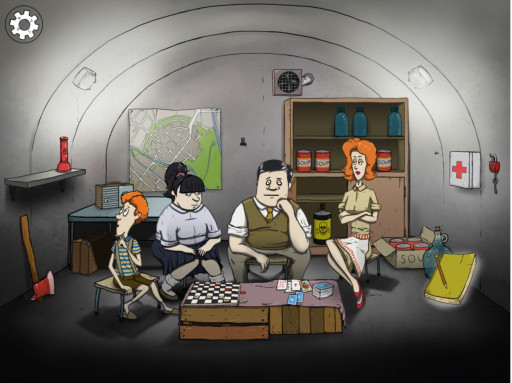
Clearly Ted has a very supportive and loving family.
60 Seconds! may not be visually impressive, but the goofy way it portrays its characters and the situations they find themselves in certainly fall into a category of dark humor, which some players may adore. The game takes many cues from more successful, mainstream franchises like Fallout, but comparisons end when it comes to gameplay and the visual novel style 60 Seconds! courts.
If you found yourself always hunting for those secret uses for each item in Undertale, you’ll enjoy the deep resource management gameplay present in 60 Seconds!
7) Transistor
Transistor by Supergiant Games is a visually impressive isometric action/adventure game set in a strange cyberpunk world, where computer science and art come together.
The citizens of Cloudbank live in a world defined by computers and the whims of the people. Polling stations across the city grant citizens access to democratic processes designed to make changes to the city -- from broad, sweeping changes like adding a new bridge, to more subtle changes, such as weather patterns or color schemes. As a result, not much of importance in Cloudbank really changes. Integral political policies and public works projects stagnate, while minor things, like which band will play next at a concert hall, are decided on much more quickly.
Enter The Camerata, a mysterious group of government employees, engineers, and media specialists who are determined to change Cloudbank forever, as well as put things under their control. You play as Red, a famous singer who doesn’t know much about The Camerata yet -- but she will. The Camerata accidentally release a dangerous force into the world, known as The Process, and it becomes Red’s job, with help from a mysterious man trapped within an even more mysterious device, to save Cloudbank from this force.
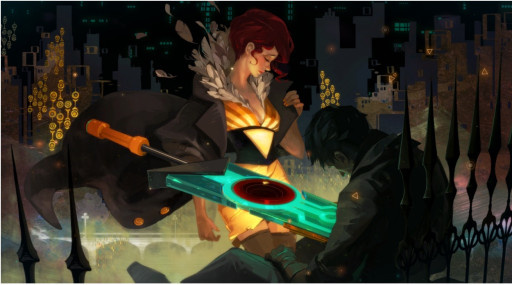
Transistor’s handdrawn art is nothing short of stunning.
As the player continues through Transistor’s world, the situation in the game continues to get more bleak. The Process corrupts and kills, spreading across the city like a virus. Things may seem grim, but it is Red’s determination to save as many people as she can, in whatever way she can, that really reminds me of Undertale: A perseverance despite how bad things might seem.
Players also have the chance to make minor changes to Cloudbank and certain events within the town, through the use of polling terminals. If you enjoyed the addition of certain small choices, which caused subtle changes to events later in Undertale, you’ll enjoy messing with the terminals in Transistor, although the options are slightly limited.
Gameplay is fast-paced and exciting, with a feature similar to the V.A.T.S. system from Fallout. It turns the game into a series of semi-turn-based fights, cycling through back-and-forth sequences of attacking and dodging, much like Undertale’s turn-based bullet-hell-esque fights (though with a bit less of an emphasis on dodging bullets, and a bit more on chaining attack combos).
The story has a surprising amount of depth, with Logan Cunningham (Rucks, the Narrator from Supergiant’s previous game, Bastion) providing voice acting for Red’s companion amidst a wonderful soundtrack by Darren Korb (also featuring Ashley Barret’s often haunting vocals). I have to admit, Transistor is a bit of a favorite of mine, and it is well worth anyone’s time.
6) Detention
Detention is a truly frightening game. Developed by Taiwanese studio, Red Candle Games, Detention focuses on two students living in Taiwan during the 1960s, just as it has been placed under martial law. These two students, Wei and Ray, have found themselves trapped within a high school following a typhoon alert the two seemingly have managed to sleep through.
Things are not as they should be in the school. Monsters and spirits from Taiwanese folklore roam the halls. As Ray, players will have to solve puzzles and learn about themselves if they want to get out of the school alive. Detention asks deep philosophical questions, and any choices you make will influence both Ray’s philosophy and the ultimate outcome of the game.
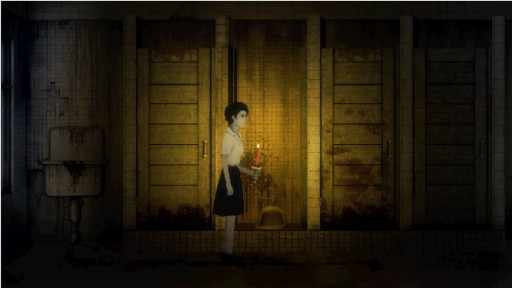
Cheer up kid, it’s just a creepy dimly-lit bathroom, what could go wrong?
For those Undertale players who felt the game was lacking in jump scares, you won’t find goofy skeleton handshakes here. Detention is an extremely mature game, and will leave the most courageous gamers shaking in their boots.
5) Gemini Rue
Gemini Rue is a sci-fi noir point-and-click adventure, by Joshua Neurnberger. It harkens back to the classic point-and-click adventure title developers that Sierra and LucasArts are known for. The story revolves around two characters in vastly different, but closely connected scenarios. Azriel Odin (no, not that Asriel!) is an ex-assassin seeking redemption on the planet Barracus, in the city of Pittsburg. Delta-Six is an amnesiac test subject in a facility known as Center 7.
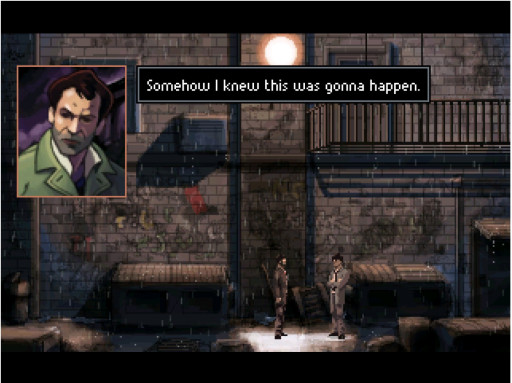
Azriel grapples with his own expectations.
As the player alternates between the two protagonists, they must keep them both alive, as one seeks to locate a certain person, while the other seeks to escape. Eventually, these two intertwining storylines will meet. If you enjoyed the surprising plot twists of Undertale, you’ll find Gemini Rue to be just as intriguing, if not more so. After all, what’s a good noir without the intrigue and twists?
4) Fran Bow
Remember earlier in this article, when we said Mad Father was a great game for people who wanted to play an innocent child in a strange and frightening world? Fran Bow takes this concept even further.
In point-and-click adventure, Fran Bow players take on the role of titular young girl Fran. One day, as Fran is out playing with her cat, Mr. Midnight, Fran returns home to find her parents have been eviscerated. She is then taken in by a nearby mental hospital -- a dreary place that seems to be doing more harm than good. Fran, having lost track of her cat, decides it’s high time to escape, and heads out into the world in search of her cat, and hoping to reach her Aunt Grace.

Just run, Fran. Just turn around and run. He can’t catch you on a bike that doesn’t move.
As Fran wanders around solving the game’s myriad puzzles, she’ll meet strange creatures as she takes pills to pass into other worlds, so that she can and find solutions. Fran tends to be chatty, and players will find humor in her childish nature, which contrasts with the otherwise mature and gloomy circumstances.
Despite the clear horror themes, there’s a lot of charm to be found in Fran Bow. Each individual character has a unique, and often endearing personality, much like those found in Undertale. Besides, there’s a talking skeleton. You can’t go wrong with talking skeletons, right?
3) I Have No Mouth, and I Must Scream
I Have No Mouth, and I Must Scream is based on a story of the same name, written by Harlan Ellison (who also wrote the story for the game). It is a point-and-click, horror adventure game, in which you play as each of the five of the last humans on Earth.
Following World War III, a sentient AI (artificial intelligence) known as AM has taken over the world. AM’s hatred for humans, which were his creators, knows no bounds. Thus, these final five human beings live in a kind of purgatory, being perpetually tortured, yet somehow kept alive by AM for over one hundred years.
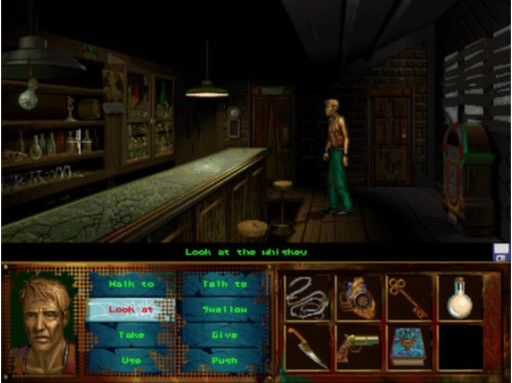
I Have No Mouth, and I Must Scream features the good old click-a-verb system point-and-click adventures invented. Innovative at the time, perhaps a bit clunky with age now.
The game really digs deep into the human psyche, portraying some very mature themes and holding each of the five humans very much accountable for their own sins, and, by relation, the sins of all of humanity.
If you played through Undertale’s genocide route and thought, “I really want to be tortured for everything bad I’ve ever done all over again,” then I Have No Mouth, and I Must Scream is truly meant for you. There are several different endings, but only true determination will see you netting the best one. Harlan Ellison also does a fantastic job voicing AM, so that’s a plus!
2) Grim Fandango Remastered
Sans and Papyrus, of Undertale fame, are strong and surprisingly deep characters -- considering they’re just a couple of talking skeletons. In Grim Fandango, almost everyone is a skeleton, and there’s an equal amount of strong characterization among all of these boneheads. The story here isn’t just skin deep, if you know what I mean.
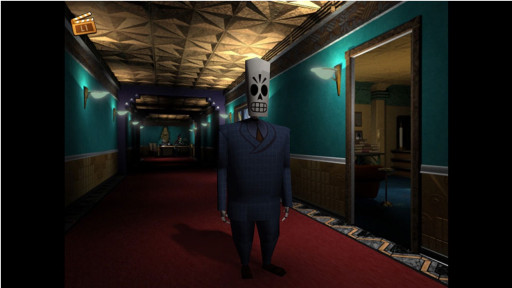
Manny fills out that suit surprisingly well considering his distinct lack of body fat.
Players control the skeleton Manny Calavera in this Mexican/folklore/noir/adventure game. Manny Calavera works for the DOD, or Department of Death. It’s his job to ensure souls on their way out of the mortal coil are able to travel fast and in luxury by selling travel packages to them. But lately, Manny’s been noticing things at his job just haven’t been adding up. Clients who should be receiving their luxury travel packages are not, and if it isn’t on Manny’s end, then who is at fault? Manny heads off on a long adventure to catch the culprits who are stealing fast passes to the great beyond.
From fantastic storytelling to top-notch voice acting, Grim Fandango is an incredible classic, re-mastered in 2015 by Double Fine Productions. You would be doing yourself a disservice by not playing this game! From the puzzles to the eclectic mix of aesthetic influence, Grim Fandango will keep you guessing throughout its delightful story.
1) The Cat Lady
Finally, we arrive at our #1:The Cat Lady. This surreal horror game involves Susan Ashworth, a suicidal, depressed 40-year-old woman who owns numerous cats. As she dies, after a successful suicide attempt, she meets with a woman who calls herself The Queen of Maggots. This woman makes Susan immortal, and sends her back out into the world of the living, with the task of killing five psychopaths, referred to as “parasites” by the Queen.
During her journey, Susan encounters a handful of characters, some of whom seem to be suffering from a similar depression to her own. The player can choose how Susan treats this, either by befriending them or not, and the results of these actions play heavily into the overall outcome of the game.
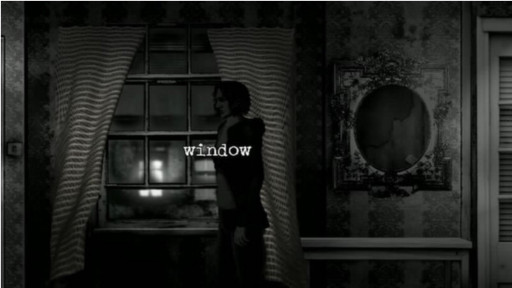
The Cat Lady’s impressive visuals range from intense to somber.
In this way, The Cat Lady and Undertale actually share some surprising commonalities. The fallen child, the main character in Undertale, always wears a bored expression no matter what is happening in the game’s story. It is never explained why the child fell into the underground, but it is not a far stretch to argue that the child could be fleeing from some unpleasantness.
Susan is also looking for an escape, and rarely seems hopeful that she’ll find it. The fallen child can either perk up a bit and try to make friends with monsters (who would otherwise be his enemies), or they can choose to turn psychotic and kill the monsters. Susan can similarly choose to spare some psychopaths, going directly against the will of the Queen of Maggots, and make the best of her situation by, instead, trying to help people.
It is this exploration of both the good and the evil in humanity that makes both of these games so powerful. If you can stomach the horror, The Cat Lady is a wonderful complimentary game to Undertale.
Note:
This is by no means an exhaustive list of games that compliment Undertale, as many of the games on our list lie in the horror genre. We chose not to focus on the lighter side of Undertale here, so as to present games that many of our readers may otherwise be more reluctant to try. Each of the above games is great, in its own right, and certainly worthy of attention. Though they may be dark or challenging, we hope you will give these games a shot, and if you do, stay determined. The reward will be well worth the effort!
Article written by: RickyH
